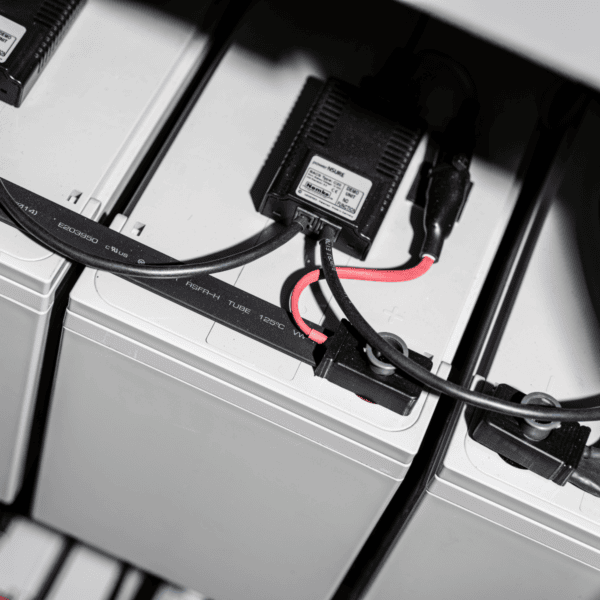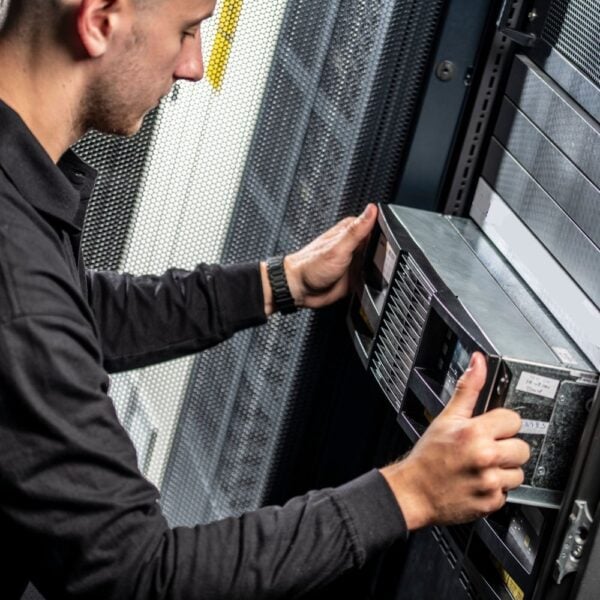A data centre UPS is a significant, high-performance unit that can both impact and be impacted by its environment in various ways. This post looks at these environmental factors and how to mitigate them.
What environmental factors can impact UPS performance?
Temperature
All UPSs have a maximum operating temperature, as quoted by their manufacturers, of typically +40°C. The installation’s air conditioning plant must have sufficient capacity to keep the UPS’s environment below this limit. The UPS’s own efficiency will significantly affect the air conditioning plant’s size and operating costs. Additionally, the air conditioning must be able to keep the ambient temperature at a level suitable for any batteries installed alongside the UPS, which should be 20°C
Humidity
UPS manufacturers state maximum permissible relative humidity levels – of typically 95% – for their products. While most UPS equipment is well designed, high relative humidity levels may promote corrosion of cabinets and internal parts. Simple dehumidification equipment is available for sites where this may be a problem.
Audible noise
The unit of sound intensity is the decibel (dB) and it represents the ratio between the sound level measured with a microphone and a reference level, 0db, which is defined to be approximately equal to the threshold of human hearing. However, as the human ear is less sensitive to very low and very high frequencies, an additional ‘A’ filter is applied when measuring background or other intrusive noises, hence the dBA unit used by all UPS manufacturers.
Typical audible noise figures for fully-loaded UPS equipment range from 50dBA for 5kVA to 75dBA at 300kVA. By comparison, rustling leaves create 20dBA sound levels, while a vacuum cleaner creates 50dBA. 120dBA is regarded as the threshold of pain. The acceptable audio noise output for any UPS depends on the application and installation location. Check the manufacturer’s quoted level to ensure the installation will create the minimum disturbance.
Energy use and efficiency
All organisations are motivated to improve energy efficiency, not only because of fuel costs but also because their stakeholders expect to see evidence of effective green policies. These matter increasingly to employees, trading partners and investors, while government policies penalise poor energy efficiency performance.
An organisation’s UPS strategy will impact its energy efficiency. In particular, this will suffer if legacy, transformer-based UPSs are still in use. Such UPSs have a typical efficiency of around 93% when fully loaded, dropping to about 90% at 50% loading, and even less at lower levels. This is important because many sites have oversized their capacity due to unrealistically high growth projections, and are running with a very low loading as a result.
How to Improve the Energy Efficiency of a Data Centre UPS
The environmental impact of a UPS system can be reduced with proper management. Energy efficiency of a data centre ups can be greatly improved by upgrading to a modern, modular installation that uses scalable UPS modules. Such systems can be rightsized to avoid wasted capacity and improve operating efficiency. In any case, transformerless UPSs’ efficiency is higher, and their efficiency/loading curves are flatter than their transformer-based equivalents. Accordingly, a modern, modular, transformerless-design UPS has a typical efficiency of about 96% when fully loaded and this drops to about 95% for loads between 25% and 75%.
Additionally, transformerless UPSs produce an input power factor much closer to unity and less load-dependent than transformer-based types. This will reduce the input current magnitude and associated cabling and switchgear sizing, and, in some instances, reduces electricity running costs.
Further energy-saving opportunities exist with UPSs such as the KOHLER PW9500DPA and 9250DPA products. These support Xtra VFI mode, which maintains module loading levels by automatically adjusting the number of active modules to meet current load demand. The efficiency improvements are essentially significant when the load is less than 25% of full capacity.



